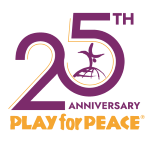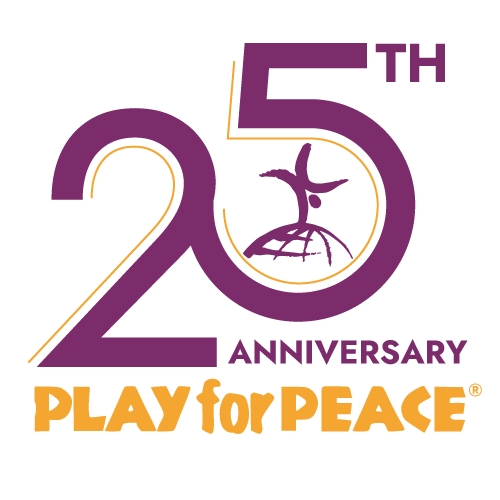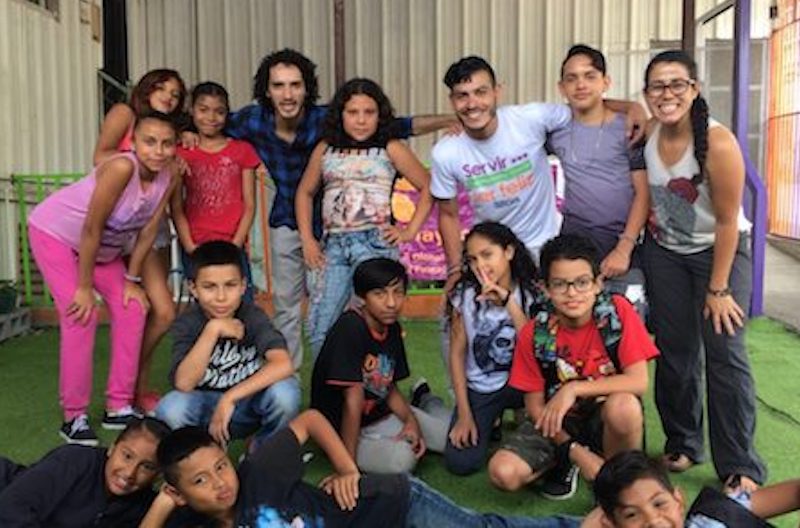“Peace is something you should work on, it´s not something that is just given to your country.”
—Diego, Mentor, Play for Peace Costa Rica
It’s always an eye-opening experience to visit with our clubs in the field. Last week, Play for Peace development officer Katrin Hünemörder spent some time with our club in Costa Rica and documented her encounter with mentors Diego and Fernando and the many children and youth participating in peace sessions on a regular basis.
When I enter La Carpio—the biggest slum in Costa Rica located just outside of San José—little children´s faces light up and they ask if it´s time to play. Darianna and Arianna, identical twins from the neighborhood, promise they will stop by. A little boy named Kevin comes running towards Diego and hugs him. Epsy, a curly-headed girl with a mischievous smile and boundless energy, comes straight towards me and asks my name. She is 11 and a leader in the community. Fernando confirms that Epsy doesn´t miss a peace session and often facilitates games and supports the group.
More than 35,000 people—mainly Nicaraguan immigrants—inhabit La Carpio, which is located near the city’s massive landfill. Few people have jobs, crime and drug rates are high, and many homes are made of packing crates with tin roofs. However, thanks to the joint efforts of NGOs, kind individuals, and the Costa Rican government, some relief has been brought to the area. Several roads are being paved, there are many more houses with electricity, and after a laborious construction time of 23 years, a new school opened in March 2018, which now educates 2,200 children from La Carpio.
One of the most impressive privately founded community projects is the Cuevadeluz, a community center managed by SIFAIS (Foundation for Social Inclusion Through Integral Arts). The center was founded by volunteers with the vision of offering safe spaces, education, and extracurricular activities such as music, arts, and athletic programs to the children and youth of La Carpio. The four-story building includes classrooms, workspaces, small gyms, and even a workshop for the women of La Carpio to manufacture handbags to make a living for themselves and their families. Many NGOs and neighborhood volunteers offer activities and classes there, and the center even has an orchestra. Many classes are offered, and adults can pursue a primary or secondary diploma through their studies there.
Children there are happy when they can draw, play, or learn an instrument, but Fernando explains that these children often experience domestic violence in their homes. One girl, Alina, didn´t show up at the center for several weeks, and when asked why not, she said that she couldn´t because her dad was shot and she had to help at home.
At the entrance of the center there is a welcome table, where Johnny and Meylin greet me. Both of them were students at the community center when they were kids, and they now volunteer to manage the center. Many volunteers were once students here who are now giving back to children and youth in La Carpio. It is thanks to the center that they received the necessary attention, skills, and knowledge they would not have had otherwise.
In 2017, when Fernando and Diego volunteered at the Skaramangas refugee camp in Greece, they learned how cooperative play is a powerful tool for reducing violence in communities affected by conflict and bringing joy to children who have faced trauma. They immediately sensed the impact Play for Peace would have in La Carpio, so upon their return from Greece, they started a Play for Peace club at the community center. Every Saturday they facilitate games, build relationships with the children, and teach them to better communicate and prevent the cycle of violence. Many kids come every Saturday; they love playing, laughing, being included and not feeling the pressure of having to win. There are always new kids who attend the sessions, so the veterans explain the games and make them feel welcome.
Play for Peace is a long-term process, not a one time project. In weekly practice peace sessions the kids are slowly learning to use non-violent communication and show compassion for one another. The group has developed rituals and signs to use if inappropriate language is used or someone is not included, instead of pointing fingers or making someone feel bad. For these children, who witness violence and abuse on a daily basis, it is not easy for to change their learned communication.
It is evident that the children in La Carpio have developed a special bond with Fernando and Diego, one that is build on trust. These bonds are crucial for the children of this community, many who live in constant insecurity at home. Diego and Fernando understand that they have taken on a great responsibility and are very motivated to continue this work, giving these children adult role models to learn from and to rely on.
After meeting with Play for Peace clubs like the one in La Carpio, the joy and pride I feel is overwhelming. It is the consistency of practice in communities around the globe and long-term commitment to a more peaceful world that distinguishes Play for Peace from other organizations and projects. It is the reason many children and youth have been impacted thus far and will continue to be in the future.



